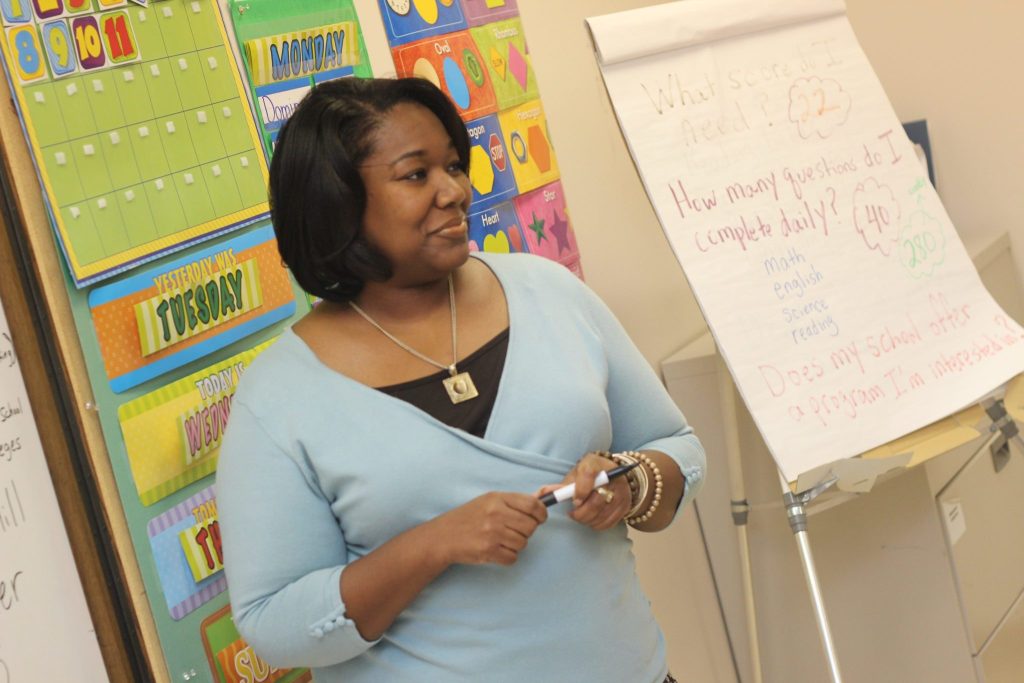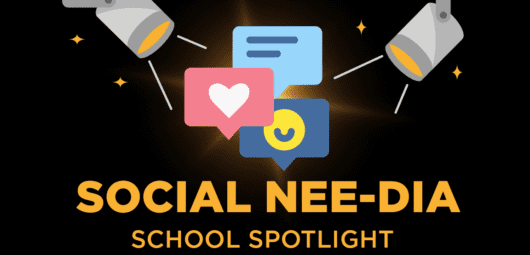#NEETurns10: 10 NEE Indicators to Support High-Leverage Teaching Practices
Here at the NEE Help Desk, we often field questions about how a school should select their focus indicators. There are 39 NEE indicators in NEE’s teacher evaluation system, and 27 of those can be scored during a classroom observation. However, NEE recommends school districts select only 3 to 5 indicators to focus on during a single school year.
One point schools should consider when selecting their focus indicators involves the old adage, “getting the biggest bang for your buck.” It makes sense to choose indicators that can have the most significant effect on student learning.
In recent years, a great deal has been written about high-leverage practices. These essential practices are strategies that research indicates improve student learning and behavior and can be used with any content area or grade level. Teachers can learn the strategies through professional development or coursework, build their skills through practice, and become effective in utilization through reinforcement and feedback. Let’s take a look at 10 NEE indicators that offer your school a big bang through supporting high-leverage instructional practices.
NEE can provide customized consultations to help districts select the indicators most important to their needs. Contact us if you would like assistance with planning. Also, read our previous blog on Introducing New Focus Teaching Indicators to Faculty.
NEE Indicator 5.1: The teacher uses motivation strategies that affectively engage students.
We have long realized that students who are motivated, like the content, and enjoy the learning activities achieve more. This means that teachers can improve student learning by using strategies designed to increase student motivation. Some of the effective strategies for increasing student motivation and affective engagement include using interesting learning materials, providing choices in learning (autonomy), praise and avoiding criticism, pointing out progress, communicating enthusiasm for the content, setting and achieving goals, and promoting self-efficacy.
Teachers who are highly effective in this indicator can be observed using multiple strategies with success. More than half of their students display motivation, interest, excitement, enthusiasm, or pride in their learning for most of the class time. Newer research indicates that when a teacher tries to make lessons interesting and enjoyable, the students interpret the teacher’s actions as demonstrating caring. Students who believe their teacher cares about them have more positive teacher-student relationships. So, teachers who work on student motivation and affective engagement can improve their teacher-student relationships through the same efforts.
NEE Indicator 5.3b: The teacher establishes secure teacher-student relationships.
The relationship created by the teacher has far-reaching effects on many aspects of school success. It makes sense that students who have a positive relationship with their teacher are more likely to care about the learning and exert more effort. Some teacher actions that support positive relationships include using verbal and nonverbal behaviors that indicate affection for students, understanding students’ backgrounds and interest, and displaying objectivity and control.
Teachers who are highly skilled in this indicator are likely to use their students’ names and ask about their lives outside of class. They may employ a system to track their interactions with students to ensure that they regularly engage with every student. Recent research has identified a relationship between positive teacher-student relationships and increased student motivation and achievement. This same positive effect has now been observed to exist for teachers. NEE researchers found that when students perceive teacher-student relationships to be positive, it encourages their teacher to use complex teaching practices more frequently including strategies designed to increase cognitive engagement, critical thinking and problem solving, and formative assessment. Teachers should strive for the type of relationship that is about the student’s potential, interests, strengths, and weaknesses rather than casual familiarity and friendliness. This means that teachers who work to improve the quality of their relationships with students may indirectly improve the instruction they provide as well.
NEE Indicator 7.4: The teacher monitors effect of instruction on individual and class learning.
Teachers who can find student misunderstandings, gaps in learning, or situations where students have already mastered a learning target are able to manage student learning and progress effectively and efficiently. Monitoring student learning requires the teacher to conduct quick, on-the-spot formative assessments that include the whole class as well as individual students. Teachers must follow the assessment by taking corrective action as needed to strengthen student learning.
Teachers who are highly effective in this practice monitor their students’ learning progress systematically, throughout instruction, and take strong, appropriate corrective actions to ensure the learning of almost all students. The quick checks must include as many students as possible so that the teacher gains an accurate impression of student progress for the class as a whole and most individuals. When the teacher can collect student responses for later review, they can further analyze student learning needs. The effective use of formative assessment strategies affects the entire learning loop for students, meaning a focus on improving this indicator can have far-reaching effect.
NEE Indicator 3.2: The teacher develops lessons for diverse learners.
Although this indicator cannot be scored during a classroom observation, its presence or absence can affect many of the other indicators and so is well worth consideration as a source of school improvement. The school curriculum should be content-rich to support adequate learning and deep understanding that will allow students to engage in higher-level thinking about the concepts. Teachers are responsible for unpacking the learning standards and units of their curriculum, and they prepare lessons that will engage students and lead them to master the learning targets. When preparing for diverse learners, teachers must consider children and students of all abilities from racially, ethnically, culturally, and linguistically diverse backgrounds. When teachers design lessons to meet the needs of all students, they may also increase student motivation and cognitive engagement, support the development of academic language, and increase positive relationships with their students who feel recognized and included in their teacher’s lessons.
Read more: Four Indicators to Evaluate Culturally Responsive Teaching
NEE Indicator 1.2: The teacher cognitively engages students in the content.
Cognitive engagement refers to steps taken by the teacher to ensure students are thinking about the subject matter during class. To adequately assess whether students are cognitively engaged, the teacher must have evidence, something produced by the students that can be seen or heard.
Teachers who are highly effective in this area begin by holding high expectations for their students, provide instruction that is cognitively challenging, set tasks requiring the students to think critically and analyze, and match their lessons to the students’ zone of proximal development. Often the “proof” of cognitive engagement consists of examining something like clicker quizzes or student quick writes or listening to student discussion during a think-pair-share. These tools allow the teacher to not only assess student cognitive engagement but to encourage it. What’s more, the evidence of cognitive engagement provided by the tools can be used for formative assessment.
NEE Indicator 4.1: The teacher uses instructional strategies leading to student problem-solving and critical thinking.
Students must obtain a deep understanding of the concepts before they can successfully engage in problem-solving or critical thinking. This means that increasing the amount and quality of student problem-solving and critical thinking must be prefaced with a content-rich curriculum. While this means that students may not be ready to exhibit higher-level thinking skills about the concepts they are learning, teachers can incorporate the skills by asking all students to explain or justify their thinking, formulate questions, predict, be creative, and make informed decisions.
Highly effective teachers strongly model critical thinking and problem-solving; allow students to solve problems independently instead of providing step-by-step instruction; and engage students in collaborative critical thinking, problem-solving, analysis, synthesis, interpretation, and creation to provide support as they build their skills. While current research indicates that the higher-order thinking skills are not as readily transferable from one type of content to another as was previously thought, simply asking all students to answer the questions “Why?” and “How do you know?” can go a long way toward improving their skills.
NEE Indicator 1.1: The teacher displays and communicates content knowledge and academic language.
Teachers who use appropriate academic language demonstrate their content knowledge. Requiring that students use appropriate academic language promotes precision of thinking, deepens their understanding of the content, facilitates comprehension during reading and speeds information-processing.
Teachers who excel in this indicator exhibit a deep understanding of the content, integrate recent developments in the field into their teaching, strongly convey relationships between key concepts, require the accurate use of academic language by students, and provide many opportunities for learners to expand their vocabulary. By ensuring students gain adequate knowledge and accurate use of academic language, teachers help to deepen their students’ understanding of the content. This, in turn, helps to support higher-order thinking skills within the subject area.
NEE Indicator 6.2: The teacher’s communications with students are sensitive to cultural, gender, intellectual, and physical differences.
Although it is unlikely that a teacher intends to be insensitive, communicating with sensitivity is important in supporting several other indicators. When teachers are empathetic, caring, and craft their written and spoken messages carefully, they can avoid situations that undermine their other work. Teachers can improve the effectiveness of their communications and increase the odds of their students’ success by considering how their words and attitudes affect students with differences. Teachers who are highly effective can see the results in improved teacher-student relationships, student motivation, and cognitive engagement.
Read more: Four Indicators to Evaluate Culturally Responsive Teaching
NEE Indicator 5.2: The teacher manages time, space, transitions, and activities.
Many researchers agree that the role of classroom manager is perhaps the most important for teachers. Organizing and running the classroom in an efficient and effective manner creates an environment that supports more effective teaching, the efficient use of teaching time, a sense of consistency for students, and fewer behavior problems. Increased student achievement has been related to a student’s placement with a “highly effective teacher,” and one of the characteristics of highly effective teachers lies in the ability to manage the classroom.
Teachers who are highly effective in this area consistently present lessons that flow smoothly and keep students on track. Their students are familiar with procedures, and the teacher holds them accountable. The classroom runs like a well-oiled machine. When class time is concentrated on instruction and not lost through disorganization, it only makes sense that students will learn more.
NEE Indicator 4.2: The teacher appropriately uses instructional resources to enhance student learning.
When used effectively, this indicator can affect several others in positive ways. To be effective, instructional resources must meet the learning needs of students, match the learning objectives, fit the content, motivate and engage students, and work in the learning environment. Despite an endless array of available instructional resources, many teachers still rely on lecture as the main support of student learning. Research has consistently revealed the shortfalls of lecture and indicates that when teachers use different types of resources, their students are more engaged and develop more neural connections, which strengthens learning, deepens understanding, and aids in later retrieval.
There you have it, 10 NEE indicators representing some of the high-leverage practices for student learning. Selecting the focus indicators for a school is a highly personal and individual process. There are many reasons a school might select one set of indicators over another. Looking at the indicators through the lens of student learning is simply one more option for schools.
The Network for Educator Effectiveness (NEE) is a simple yet powerful comprehensive system for educator evaluation that helps educators grow, students learn, and schools improve. Developed by preK-12 practitioners and experts at the University of Missouri, NEE brings together classroom observation, student feedback, teacher curriculum planning, and professional development as measures of effectiveness in a secure online portal designed to promote educator growth and development.



